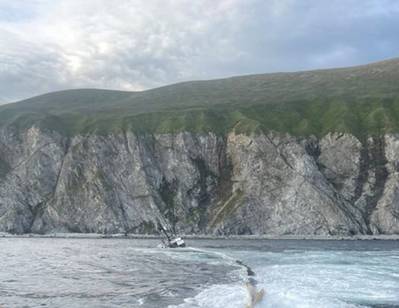Report: Submerged Rock Led to Fishing Vessel Grounding
A captain’s decision to navigate close to shore in an area with uncharted rocks led to the grounding and capsizing of a fishing vessel in Alaska last year, the National Transportation Safety Board (NTSB) said.
The Challenger struck a submerged rock while fishing for salmon along the shore of Kodiak Island, Alaska on August 7, 2022. The vessel began taking on more water than the onboard pumps could handle. The captain and three crewmembers abandoned ship and were rescued by a nearby Good Samaritan fishing vessel, and the vessel capsized soon after. Another Good Samaritan vessel towed the fishing vessel to Larsen Bay. No injuries were reported. The Challenger was declared a total loss, with damages exceeding $600,000.
The captain told NTSB investigators he knew there was an uncharted rock in the area he was navigating, but he believed it was closer to shore. He said on previous fishing trips, during a “really low-minus tide,” he saw the rock, but did not mark it on his charting software.
“In addition to marking hazards on their own charts and charting software, mariners can report issues (errors or omissions) with the National Oceanic and Atmospheric Administration’s nautical charts and/or Coast Pilot through the Office of Coast Survey’s ASSIST tool,” the report said.
To report an issue such as an uncharted rock, a user can enter the rock’s position manually or drop a pin on the electronic navigation chart incorporated into the ASSIST tool. Users can access ASSIST from a computer or mobile device. Coast Survey aims to follow up with all inquiries within two business days.
The Challenger was operating 220 yards from the shore, which is much closer than the at least one-mile berth called for in the Coast Pilot for the area where the Challenger grounded. According to the report, the captain assumed the risk of operating close to the shore so he could be in the area with better weather and fishing, which ultimately resulted in the grounding.
The NTSB also determined the lack of a watertight collision bulkhead and subdivision or compartmentalization below the main deck, which allowed for progressive flooding, contributed to the capsizing. Had the Challenger’s access hatch between the forepeak and void below it been watertight, the flooding into the void would have been contained, and the resulting progressive flooding that led to the vessel’s capsizing would likely have been prevented.











